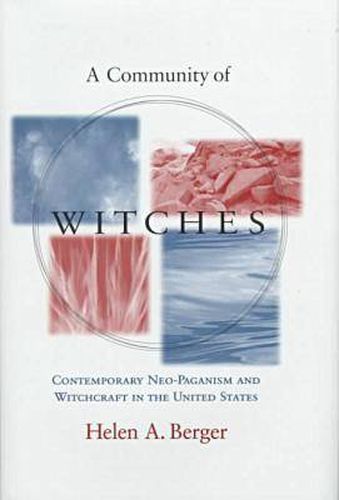Readings Newsletter
Become a Readings Member to make your shopping experience even easier.
Sign in or sign up for free!
You’re not far away from qualifying for FREE standard shipping within Australia
You’ve qualified for FREE standard shipping within Australia
The cart is loading…






A Community of Witches explores the beliefs and practices of Neo-Paganism and Witchcraft - generally known to scholars and practitioners as Wicca. While the words magic,
witchcraft, and paganism evoke images of the distant past and remote cultures, this book shows that Wicca has emerged as part of a new religious movement that reflects the era in which it developed. Imported to the United States in the late 1960s from the United Kingdom, the religion absorbed into its basic fabric the social concerns of the time: feminism, environmentalism, self-development, alternative spirituality, and mistrust of authority. Helen A. Berger’s ten-year participant observation study of Neo-Pagans and Witches on the eastern seaboard of the United States and her collaboration on a national survey of Neo-Pagans form the basis for exploring the practices, structures, and transformation of this nascent religion. Responding to scholars who suggest that Neo-Paganism is merely a pseudoreligion or a cultural movement because it lacks central authority and clear boundaries, Berger contends that Neo-Paganism has many of the characteristics that one would expect of a religion born in late modernity: the appropriation of rituals from other cultures, a view of the universe as a cosmic whole, an emphasis on creating and re-creating the self, an intertwining of the personal and the political, and a certain playfulness.
$9.00 standard shipping within Australia
FREE standard shipping within Australia for orders over $100.00
Express & International shipping calculated at checkout
A Community of Witches explores the beliefs and practices of Neo-Paganism and Witchcraft - generally known to scholars and practitioners as Wicca. While the words magic,
witchcraft, and paganism evoke images of the distant past and remote cultures, this book shows that Wicca has emerged as part of a new religious movement that reflects the era in which it developed. Imported to the United States in the late 1960s from the United Kingdom, the religion absorbed into its basic fabric the social concerns of the time: feminism, environmentalism, self-development, alternative spirituality, and mistrust of authority. Helen A. Berger’s ten-year participant observation study of Neo-Pagans and Witches on the eastern seaboard of the United States and her collaboration on a national survey of Neo-Pagans form the basis for exploring the practices, structures, and transformation of this nascent religion. Responding to scholars who suggest that Neo-Paganism is merely a pseudoreligion or a cultural movement because it lacks central authority and clear boundaries, Berger contends that Neo-Paganism has many of the characteristics that one would expect of a religion born in late modernity: the appropriation of rituals from other cultures, a view of the universe as a cosmic whole, an emphasis on creating and re-creating the self, an intertwining of the personal and the political, and a certain playfulness.